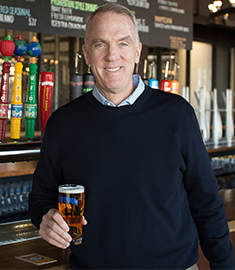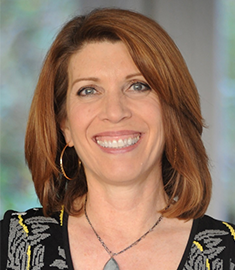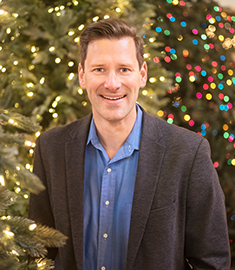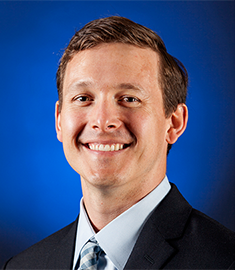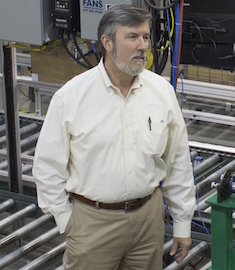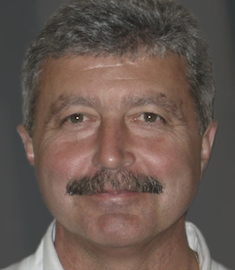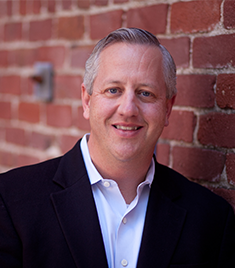Paper Dreams: How the Support of My Family Business Helped Me Start My Evergreen Company
My family runs a successful 80-year-old company. But when I wanted to jumpstart my own dreams, I was able to use their support system to build my own Evergreen company.
In the Evergreen community we talk about Pragmatic Innovation — embracing growth by taking calculated risks. That’s exactly what I did three years ago when I founded Chasing Paper, a removable-wallpaper company. It’s a forward-thinking, New York-based design company, but its roots stretch deep into the Midwest. I grew up in Milwaukee, Wisconsin, where my family runs Kubin Nicholson, a large-format printing company founded in 1926. Though the paper business is in my blood, for most of my life I was always more passionate about striking out on my own.
For three and a half years I worked at National Geographic in New York, building corporate partnerships. At the time, I honestly had no interest in working in the family business.
But in 2010, my father asked me if I would help him usher the company into the 21st century. I somewhat reluctantly agreed and set up my own satellite office in Manhattan.
I tasked myself with building Kubin Nicholson’s website and helping with marketing content, things the company had never really had before. At the same time, I started learning about the business in a way I hadn’t as a kid — and I actually found it to be fascinating. I was riveted by all sorts of granular details, like what materials they were using for printing and how they created billboards. Within a couple years, I brought in National Geographic as a Kubin Nicholson client, and I started looking around for some other fun opportunities.
A friend, Katia Beauchamp, co-founder and CEO of Birchbox, asked me to help create some birch tree wraps (made from Kubin Nicholson paper) for the support beams in her office. It was just a one-off project, but it turned out to be so exciting. The paper beams were aesthetically transformative, and they created a lot of buzz. Plus, they weren’t permanent, which is important when you’re in a rental office space.
Flying on this success, I looked into removable wallpaper. I found some very expensive options and some low-end wall decals. But there was nothing in the middle. No one was creating well-designed, on-trend removables that felt like traditional wallpaper. The lightbulb flicked on.
I launched Chasing Paper with a small amount of capital, one photo shoot and a website. I wanted to make sure I was moving forward but limiting my risk as much as possible, so I decided to place Chasing Paper under the umbrella of Kubin Nicholson. Think of it the way West Elm is part of Williams-Sonoma but also stands as its own company. The family business helped me establish Chasing Paper, although we manage our own profit and loss.
Three years later, we’re tracking to grow sales 15 percent beyond our projections. Chasing Paper has been written up in the New York Times, Wall Street Journal and Martha Stewart Living. We have an exclusive collection with West Elm and another with Bloomingdale’s. I work with the top materials designers and have even staged photo spreads in Real Simple and Better Homes and Gardens. The right people are paying attention.
Chasing Paper produces 100 percent of its prints through Kubin Nicholson. I liaison for Kubin Nicholson, and I’m still on their board. We have a lot of crossover with people and ideas. There is a Kubin Nicholson production manager who works on Chasing Paper about 30 percent of her time. And while I’ve learned so much about the paper industry from my father and grandmother, I like to think they are learning from me as well. They say you can’t teach an old dog new tricks, but Chasing Paper has certainly given Kubin Nicholson a lot to consider in the world of e-commerce and technology. In fact, after Chasing Paper set up a digital sales portal, Kubin Nicholson followed suit.
It is so exciting and fun to be contributing to the family business while still carving out my own space. With family dynamics in an Evergreen business, the trick is finding something you’re passionate about. I feel so fortunate that this cool business venture is steeped in my family’s history.
Elizabeth Rees is the Founder of Chasing Paper.
Why We Gave 48 Percent of Harpoon to Our Employees
Evergreen companies have a special capacity to do tremendous good. At a time when a lot of people look around and feel like the system is rigged — the rich are getting richer, CEOs are paid extreme amounts, private equity firms are taking over — Evergreen companies can stand up and say: There is another way to do business. Greed should not be the driving force. We can all do well by sharing the load and the rewards.
At Harpoon Brewery, this is more than just a nice ideal — it’s how we operate.
Two years ago, my founding partner and I reached a critical impasse. He wanted to sell our 28-year-old Boston-based brewery to either a strategic buyer or a private equity firm. I did not. Despite the fact that there were a number of potential buyers out there willing to set us up financially for life, I couldn’t do it. I had a great deal of pride in what we had built and so much affection for the people who helped us along the way. I also have a decent amount of suspicion of some private equity folks, many of whom are out to make a quick buck at the expense of everyone else involved. Instead of selling out, I decided to sell in. To ensure that we would never be taken over by private equity, I thought we should implement an employee stock ownership plan (ESOP), which would give ownership of the company to our employees.
My partner still wanted to sell, though, and we couldn’t reach a resolution. Between the two of us, we had 90 percent of the company shares — 45 percent each. We decided to take our dilemma to the six other shareholders and let them be "the jury." On March 7, 2014, they voted 6 to 0 for the ESOP. We bought out my partner, and some shares from five of those six shareholders and put 48 percent of Harpoon’s shares into an ESOP trust.
One week after the deal closed, I held a meeting with the approximately 200 full-time Harpoon employees and told them that I wanted them to meet the new owners of a minority stake of Harpoon. They glanced at the door, expecting Budweiser or MillerCoors to walk in. I told them to all stand up and look at each other as they were all the new owners. People started cheering and crying. It was so much fun.
For the past two years, getting the ESOP up and running has been a great challenge. We’ve had to ask people to take their blinders off a bit and really recognize that their efforts have an effect on everyone’s financial well-being and security. We launched a committee of 12 employees to manage ESOP education and activities.
The activities are mostly social on a monthly basis, and annually we have an event to present statements of distribution (share price announcement). The education aspect is ongoing for both new employees and existing ones. We have an owners’-club meeting once a month. We have Friday sessions to talk about ESOP issues and to provide an opportunity for employees to talk about ideas. For instance, if a guy on the bottling line has an idea to save a penny a case, we build from there. A penny a case can quickly turn into $90,000 — and that’s money that will line all of our pockets. As owners, employees participate in Harpoon’s profits.
Our unified vision is to create a brand of enduring value. We now have a culture that helps employees achieve financial security. This is not your normal business. Just going through the motions and punching the clock doesn’t cut it here. We want our employees and potential employees (all new full-time employees become participants in the ESOP after working 1,000 hours) to think this is an attractive way to make a living and to look at it as more than just coming to a job every day.
There is too much greed in our society. I feel strongly that an Evergreen company can prove there is a way capitalism can work for everyone — not just the bankers and private equity firms. My shares decreased in value by two-thirds when this transaction was completed. But I am a fervent believer in my employees, and I am enjoying this cool, supportive culture we have created.
We have found that there is no better way to earn a living than running our own Evergreen business. Together.
Daniel Kenary is the Co-Founder and CEO of Harpoon Brewery.
GROW, BABY, GROW -- IT’S ALL ABOUT THE CONTRIBUTIONS
We at Torani consider ourselves a 90-year-old startup. We have grown over 20 percent a year on average for the past 25 years, and have risen from a small San Francisco brand to one recognized in cafes and bars worldwide. Yet … of all the things of which we’re proud, our double-digit growth rates are lower on the list than you might think. That’s a lagging indicator of success. The leading indicator is the growth and development of our people.
With people at the center of how we think about our business, I’d been on the lookout for an alternative to performance reviews. I don’t know if you’ve ever personally experienced a performance review, but I’ve found them a little demoralizing and a waste of time. In fact, my experience of performance reviews is that they inhibit or distract an organization from performing.
After many experiments with tweaks and alternatives to performance reviews, I finally found something that felt really right. “Contribution Management” were the words that Catriona Wiley, now our VP of People & Culture, uttered when she interviewed with us. We were smitten.
Unlike performance reviews, which are judgmental and only look backwards at performance, Contribution Management is a framework to discuss an individual’s current contribution and potential contribution. Most importantly, it changes the dynamic between the manager and the team member. Whereas performance reviews are “done to you,” contribution discussions are owned and led by the team member.
This is a major shift in mindset. Rather than being in a judgmental role, the manager shifts to the role of a coach who is helping the team member increase their contribution and continue their development and growth. This sounds easy but it’s taken two years of practice (really) for us to get the hang of this.
Here’s how it’s worked for us. We decided to take baby steps over two years to implement the changes. We began by focusing on the year-end recap. We created simple documentation to help frame a conversation that could be led by the team member. Then we trained everyone in the company to be prepared for a team member led conversation. This was most challenging for managers. Rather than making statements about a person’s performance, they were now asking great questions and providing feedback. At the close of the session the individual and manager agreed on the team member’s level of contribution: Did they do great? Were they above and beyond? Or were they behind the pace? And what did they learn over the past year that they would apply going forward?
That leads us to the next step: A separate conversation focused on the future, which includes goal setting and development planning. In this conversation the manager takes a greater lead by sharing the context of the company’s strategic plan and the department’s plan (we have these simplified to one page each). The manager then invites the team member to discuss how they’ll contribute to the plans and they agree on the team member’s personal goals. They also identify what the team member wants to be doing differently and to learn over the next 12-18 months, and agree on a development plan.
Finally, we’ve made Contribution Management a year-round process as we’ve incorporated it into our DNA. Several times a year, team members check in with their managers to discuss their progress and stay on track. By focusing on supporting individuals, we’re building a stronger, happier workplace.
Every one of our 170 team members participates. I do my check-ins with the board — and I’ve found it to be an engaging and motivating process. Looking forward to what people can do, instead of looking backward to what they have done, is a respectful way to discuss work and to get people feeling responsible for their own actions. It has energized individuals and the company as a whole.
We’re seeing tangible results from just two years of practice. Besides our team members feeling much more engaged, we have seen a significant increase in internal applications for positions. In Q1 of this year, 8 out of 17 positions were hired from within. In the past, any internal promotion tended to come from a manager approaching an individual; these days, individuals proactively consider and apply for roles.
Contribution Management is the antithesis of top-down management. It is all about development and building across the whole organization. What I love most is how this has encouraged Torani people, whether on the bottling line or in the C-suite, to have conversations with their managers about how they can grow. It has created a language for us to discuss the tricky things, like compensation, with trust and transparency. And it’s opened up the conversation beyond the office — we are expanding to ask people how Torani can help them get a higher education or how they can plan for buying a home.
This is one element on our path toward becoming an everyday powerful force for good in the way we work.
Melanie Dulbecco is the CEO of Torani.
Our Mentor Program Isn't Perfect But It's Just What We Need
When our company, Balsam Brands, took off like a rocket in 2006, we had to quickly design a business that would last for the long haul. We knew that above everything else, we wanted to create a place where our employees would be happy and fulfilled and would love their jobs. We are not saving the world here — we are selling artificial Christmas trees and home decorations. So we felt this kind of people-first workplace would be critical not only for our company’s success, but for everyone’s personal happiness.
Although I was only 30 years old when I started the company, I had already been in business for a number of years working for McKinsey, a large nonprofit, and running my parents’ manufacturing business in Ohio. I had seen what worked and what didn’t. I knew that happy workplaces are ones that give employees opportunities to grow both professionally and personally.
That’s why we developed our mentor program, which has gone a long way toward ensuring employee growth and happiness. It’s an idea that we encourage all Evergreen companies to adopt.
How does it work? Mentors are separate from managers. Managers oversee work goals and have a say in things like raises and promotions. Mentors are there for support. A mentor is there to listen and offer guidance.
At least once a year, each employee meets with their mentor for what we call a Development Chat (it intentionally is not a review). Armed with feedback from several of the worker’s peers, mentor and mentee discuss how things are going and set some goals for the coming months. If those goals are all business-related, that’s kind of a bummer. We want these discussions to be more holistic, which could include goals like going to the gym more, eating healthier food or taking up a new hobby.
Those are the formal mentor meetings, but mentors are available anytime a worker has a problem or needs a friendly ear or some advice. We hope employees will meet with their mentors three times a year — even if it’s just for coffee — but we don’t force it down anyone’s throat. The whole point of the mentor program is to encourage employee happiness and to make Balsam Brands a place where people love working.
Although we’ve found this system to be incredibly beneficial and a big part of the reason we have such low turnover, I’d be lying if I said it wasn’t time-consuming. Not everyone is a great mentor, so the people who do sign on to the program end up taking on more work because they will often have several mentees. There are people in the company who are giving feedback to between five and 15 employees. To ensure that feedback is valuable and productive, people who are asked to review their peers are expected to be very thoughtful in their responses, which also takes time.
We’ve searched far and wide for a way to redesign this process to make it more efficient. But here’s the thing: Whenever we talk to other companies about this question, they almost always end up wanting to adopt our program. They see how inspired our employees are and they want to try and replicate that in their own company.
Every Evergreen CEO knows that in order to build a 100-year company, you need to put your people first. Although we don’t think our system is perfect, it’s achieved our goal of creating a satisfying, happy workplace. Thanks to our talented team, our company has continued to expand; last year we did $90 million in revenue and were named to Forbes’ Best Small Companies list. The future looks bright for Balsam Brands thanks in part to our mentor program.
Mac Harman is the CEO of Balsam Brands.
What Operating In A War Zone Taught Me About Putting People First
Entrepreneurs know they need grit to persevere through tough times. But nothing could have prepared me, or my entire company, for the perseverance we would need to show when two-thirds of our staff was suddenly engulfed in war zone.
My husband, Kenny Rosenblatt, and I started our gaming company, Arkadium, in 2001 in New York City. We were two determined 25-year-olds, hungry to trade our cushy six-figure salaries for the risks of entrepreneurship. It was a low time for our industry — the bubble had just burst, and I was looked at like a lunatic when I announced that I was going to start a tech company with my (then) boyfriend.
One marriage, three kids and over a decade later, we found ourselves with a multimillion-dollar business. Kenny serves as Arkadium’s president and I am the chief executive. We are known for successful Web and mobile games like Mahjongg Dimensions, Twisty Hollow and Imago. That solitaire game that came preinstalled on your PC that you use to unwind at the end of the day? That’s us.
In addition to our headquarters in New York City, we also had a fully staffed office in Simferopol, in the Crimean Peninsula of Ukraine. We spent close to 10 years growing that office, building relationships and investing in our future there. We even bought an apartment and spent the summers there with our kids. By 2014, our office in Ukraine had grown to over 100 people. Then the war started.
Suddenly an area of the world no one had heard of was front-page news. Tanks rolled through the town square and armed men roamed the streets, putting tremendous stress on our employees as they weighed the safety of leaving their families every day to come to work.
That December, the Obama administration declared sanctions on any U.S. company doing business in Crimea. The penalty was 25 years in prison and a $250,000 fine. Suddenly, in addition to worrying about the safety of our staff in Simferopol — a city we considered a second home — we were worried about the future of our business.
It might seem like this would have been a good time to cut our losses and start fresh with new employees in a safer part of the world, but that never occurred to us. My husband and I had built our company by hand, and our Ukrainian employees are no different to us than our New York staff. Abandoning them was out of the question.
As an Evergreen CEO, I focus my energy on culture and people over making myself a billionaire. I know that by following this path, success is not only inevitable but that it will be truly gratifying.
So instead of folding the Ukraine office, we talked to our employees to find out what they wanted.
While some members of that team wanted to stay because of personal obligations, others were ready to leave and trusted us to do the right thing as we helped them find ways to relocate and pick up the pieces of our business. Ultimately we moved 55 people — and their families — to mainland Russia and opened a new office near Sochi, where our employees were safe and we were no longer subject to U.S. sanctions.
These events, and the decisions we had to make, were extreme. But remarkably, and against all odds, Arkadium is thriving once again. With nearly half our staff gone, we dramatically scaled down our efforts in mobile gaming, an area that had given us minimal success, and returned to what had been the original nerve center of our company: casual Web-based games for publishers like USA Today and CNN.
We had a tremendous year in 2015, growing profit by over 400 percent and adding close to 500 new partners. We even started to grow our new office in Russia, adding 20 new employees.
As the story spread across the tech sector, our reputation grew. There are very few companies our size that have been around as long as we have. Most startups either are bought or fold before they reach our capacity. We are known in our industry as survivors, and the events of 2014 certainly reinforced that reputation.
As a business owner, you have to be a crazy optimist. If you don’t see the light at the end of the tunnel, you won’t survive. But a bigger lesson from this story, for me, is the karmic one. Evergreen CEOs put their people first, and those people notice. As a result, when times get tough or given the chance, those same people will step up in extraordinary ways for you.
Jessica Rovello is the CEO of Arkadium.
Our Values Have Kept Us Moving For 148 Years
Building a culture requires a Crock-Pot, not a microwave. You don't post core values on the wall and then move on to the next thing. It's very organic and requires that slow, steady repetition, and over many years it does take shape.
At Betts Company, we’ve had the time to put in that work. We are in our sixth generation of leadership at our 148-year-old company and we’ve come to realize that it’s the values we instill in our company and our employees that will help us stick around for at least another 148 years.
At Betts Company, we “Improve the Way Things Move.” We make springs, mud-flap hangers, fenders and other parts for commercial vehicles and other industries. We started off making springs for horse-drawn carriages, and as modes of transportation have evolved, we’ve evolved with them. At the end of the day, if our team remembers one thing, we want to remember that we exist to “Improve the Way Things Move.” That’s just five words. Hopefully we can all remember five words.
“Improve the Way Things Move” has been our purpose statement for the last three years. Around that time, while I was getting my MBA, I realized we had a wonderful history, but needed something more. As part of a marketing class, we watched the Simon Sinek TED talk "Start With Why," and it inspired me to think about the why of our business, and to find a way to communicate our why for generations to come. I started really looking back through our history and checking in with team members to say: What are the things we believe in? What really is the DNA and the root of where we've been? We've always had values, but before 2013 we never really described them in a plainspoken kind of way.
Our company comprises three different divisions in 11 different locations. We had been growing and expanding organically, but we hadn’t really taken the time to explain why, so the company felt fragmented. With that much reach, you end up with these subcultures that have different interpretations of what the company is about.
So after watching Sinek’s talk, I was inspired to write down the Betts Way with a view toward unifying our company around a common set of values: Respect everyone, aim for excellence, share your passion, work smart, take care, act ethically and communicate.
The values help us stay focused. They create a third perspective if team members are having a healthy debate. If things get a little “cattywampus,” there's always a document we can go back to, which is the Betts Way, to help frame how we should be interacting with each other for the betterment of the company. We can take the emotion out of an emotional situation. This isn't me — this is what the Betts Way says.
It also helps with new recruiting. When we’re recruiting, it’s a two-way street. We’re getting to know somebody and they’re getting to know us. What better way to get to know us than to be able to read the Betts Way and decide if what is written energizes you or scares you? It's either exciting or not. And if it's not, better for us both to understand that very early on in the process, rather than somebody coming on board and realizing our culture is not the right fit.
We want the Betts Way to give our team members permission to be their best selves inside the business and in their homes and communities. We’re hoping it's not just a J-O-B. Work is a big part of life. We want to think about how we’re contributing in our homes and communities, not just the workplace.
Our values also help us move forward together as a company. It gets back to us needing to constantly get a little bit better to have a fighting chance at continuing to grow. We can't be stagnant. We're in tough industries. So if we don't continue to improve and evolve, one day we won't be relevant. Our values keep us focused on improvement. We can’t control the economy but we can certainly control how we run our business.
Bill Betts is the President of Betts Company.
Why I Only Hire Weird People
Weird people change the world.
When I co-founded my environmentally friendly soap company, Method, in 2001, I quickly realized that we were up against some mighty big competition. Cleaning-product companies like Procter & Gamble and SC Johnson were multinational and had 100-year head starts on me; they had strong control over grocery store shelves and well-entrenched relationships with the big-box stores. In order to compete against these Goliaths, Method had to be different. And that started with my employees.
If I wanted my people to go a mile in one direction, I needed them to set a milestone two miles out. The best people who could successfully complete this task? The weird ones. I generally find that people with a little dose of weird are more motivated to do things differently, as they find normal boring. They are naturally wired to go the distance to create change because conformity is uncomfortable for them.
My co-founder, Adam Lowry, and I sought to hire — and keep — that specific demographic. We liked people showing up as their personal selves, not their professional ones. People do their best work when they are comfortable in their own skin. So we established a test to make sure we were getting the right folks through the door. We would give every final candidate three questions as a homework assignment. The first two questions would be tailored to the role. But the third was always “How would you keep Method weird?”
People were given great freedom in how to answer this question. One person led an entire band into our conference room to play a song. We’ve had a spontaneous yoga session and a tennis match in the alley. It’s all over the place. The best answers are not necessarily events but personal stories that really describe who the candidate is and what they will bring to Method.
Our hiring strategy paid off. The weird folks we hired were aligned with our vision of the company and helped us grow like crazy. Over the course of 15 years, Method completely changed how people look at and buy cleaning products. I’m proud to see how we have made our mark with clean, green, beautifully packaged products — and how they have even influenced our competition’s lines.
I still do some work at Method, but last year Adam and I co-founded a new, Evergreen company called Olly, which is going to do for vitamins what Method did for cleaning products. Evergreen companies put their people first because a company's employees are its best asset. Letting our employees show their true colors is our way of building a workforce that is going to be as dedicated to our mission as we are.
Asking potential employees to help keep Olly weird helps people let their guard down, and we get a real sense of who they are. Plus, this prevents window shopping. Candidates willing to work on a homework assignment like this one are serious about the job.
Once we hire, my challenge is to make sure our employees stay weird and are always given opportunities to march to a different beat. That’s tricky when you need to have a cohesive team. We’ve found a few specific ways to maintain our culture of weirdness and individuality. A different person leads our companywide meeting each week. At the end of the meeting, we choose a name out of a sparkly hat for the next leader. This keeps things exciting and allows everyone an opportunity to shine. We have larger meetings throughout the year that have specific themes (think prom!) that allow people to work together but, again, let their freak flags fly.
These touch points give us moments to reinforce our culture. Whenever we feel like there’s a lull in the office, we slip some money to an employee and ask him or her to spice things up with spontaneous breakfast for everyone or a happy hour. Culture is contagious, good or bad. If people do good, they get inspired and keep the momentum going.
To keep workers from getting complacent, every job requires people to take a shift at reception. Every six weeks you’re on front-desk duty, delivering mail and answering phones and greeting visitors. We decided this would keep the place more humble and keep the ego out of it. Plus, whoever is running the front desk can create themes for the front. It’s another opportunity to keep Olly weird.
Olly achieved $12 million in first-year sales. Our Evergreen company is off to the races. And we couldn’t do it without our staff of 20 weirdos.
Eric Ryan is the Co-Founder of Olly.
Building a Big-Ass Company for the Long Haul
I get approached all the time by people who want to invest in our company. But I don’t want to have to worry about what some knucklehead thinks I should be doing. I want to run my business in a way that makes me and my employees happy and satisfies our customers.
So far, we’ve managed to do pretty well without investors. My company, Big Ass Fans, brought in $224 million last year selling, well, big-ass fans for industrial spaces. We’ve also recently started selling residential fans and lights for industrial spaces. We’ve grown 30 percent every year since the recession and we expect that to continue — without outside investors.
It’s always been important to me to run my business on my own terms. When I started out in insurance in Dallas in the 1970s, I specialized in reinsurance, but I thought my company could build a nice new business insuring the local oil industry. My bosses wanted me to just keep doing what I was doing. I couldn’t get my brain around the idea of sitting in an office in Dallas for the rest of my life doing the same thing and looking out the same window. So I took a leave of absence and started my first company.
Sprinkool was a good idea. We set misters up on the roofs of industrial buildings to help keep them cool. Industrial buildings, where you can have thousands of people working at any given time, are rarely air-conditioned. There’s a real need for an efficient, cheap cooling system.
But I couldn’t sell people on the idea of Sprinkool. I still spent 10 years trying. At our peak we brought in only $1.4 million. That wasn’t enough to earn a living or grow a company. Our first company wasn’t really a business — it was an airplane we couldn’t get off the runway.
But that time provided me with an education in public relations, marketing and industrial buildings. One of the big problems with Sprinkool was that employees couldn’t see it, so there was no psychological benefit. But they could see a big-ass fan.
So in 1999 I started selling giant fans. Initially I tried to sell the fans along with the Sprinkool system, but people only wanted the fans. So I focused on that. I wrote articles for trade magazines about the benefits of big fans. Many buildings relied on small standing fans that employees fought over. A giant ceiling fan not only covered more area and eliminated those fights, but it used less electricity than all of those little fans going all day.
Customers caught on to the benefits and we were off and running. We grew quickly but I was able to shape Big Ass Fans into the kind of business I always wanted to work at. We run our business like a three-legged stool, which means we pay equal attention to the happiness and success of our customers, suppliers and employees.
We employ our own salesmen, which means we have a direct link to our customers. We know what they need and we make sure they are satisfied, even if that occasionally means earning less money. In many industries, suppliers often get treated very badly and that hurts quality. We make sure we treat our suppliers with respect and attention and that has helped us sell great products.
On the employee side, we encourage people to come up with new ideas and even new businesses. I don’t want anyone to feel like I did back in my insurance days. In fact, our two new business lines, Big Ass Light and our residential line, Haiku Home, were both started by employees. Work has to be fun and exciting and there has to be a bright future. If not, your best people will leave. We hire only about 1 percent of all applicants and we have an incredibly low turnover rate thanks to this philosophy.
I’m now building a 200-year company. I think about and plan for succession. It’s not the next generation I’m worried about. It’s the third and fourth. My goal is to build a strong enough culture, and a strong enough business, that Big Ass Fans will keep going, without investors, long after I’m gone.
Carey Smith is the CEO of Big Ass Fans
My Surprising Journey to Becoming an Evergreen CEO
My path to becoming an Evergreen entrepreneur was not a straight one. Twenty-five years ago, I never thought I’d own a manufacturing business, let alone one where I would be turning away potential investors. But at the age of 60, that’s where I find myself. And Dynamic Architectural, my windows and doors business, is a thriving Evergreen business.
My journey started in 1991, when my friend Norm Evans asked me to run his manufacturing business.
The request came as a huge shock. Norm was a client who was in the process of buying two divisions of a public company. One division manufactured wood windows; the other made wood doors. Norm had asked me to come in as an investor on the deal, and although I told him I wasn’t Bank of America, I happily put some of my own cash into the venture.
I had no plans to run the company. But Norm made the request from his hospital bed. The sale had closed on March 23, 1991. On March 25, Norm suffered a massive heart attack. His wife called and asked me to go see Norm in the hospital. When he made the request, I couldn’t say no.
At the time, I was 35 and my insurance brokerage business was able to run on autopilot. I’d grown up admiring my grandfather, a consummate entrepreneur. Here was an opportunity for me to try my hand at running a large business. And besides, Norm was a friend. He had sunk all of his personal assets into the business and needed my help. How tough could a window and door business be?
I quickly found out. The company barely had enough capital to get through my first day. The workers were scared and seven salesmen were in my office, each claiming he should be the new owner of the company.
Then I got hit with some really bad news. It turned out that the public company Norm bought the divisions from had gone into receivership before the sale had gone through. Those divisions had been put up as security against bank loans. The divisions technically belonged to the bank and the sale had been unwound.
To make that point perfectly clear, the sheriff and his deputies showed up to say they were seizing the company and all of its capital goods. The sheriff dead-bolted the doors to all five of our buildings.
I was desperate not to lose Norm’s life savings my first week on the job, so I managed to convince the bank that our inventory of “machined wood components” was valuable only if we could turn it into specific windows and doors. They agreed to let us start working again. At 7:30 every morning, the sheriff’s representative unlocked the doors. Then he sat in the boardroom drinking coffee until 4:30 p.m., when he padlocked them back up.
Six weeks later, Norm was out of the hospital. We’d renegotiated with the receivers so Norm could repurchase the assets and inventory at a lower price so that was good. But there was a change of leadership at Norm’s bank. The new management said the $350,000 loan he needed was off the table. We had a week to come up with the cash. Thinking on our feet, we asked the owner of three of our five buildings if he’d put up $350,000 to keep us in business and keep his buildings rented. He didn’t like the idea, but he liked the idea of three empty buildings even less. He funded us.
Norm owned the company again, and I figured my work was done.
But a few months later, I was back in. That fall, Norm had to go back into the hospital for a six-bypass heart operation. I agreed to hold the rudder until Norm was back up to full health, but during those weeks, something changed in me. As the company began to emerge from its initial crisis, I got hooked on the challenges and joys of working in manufacturing. Windows and doors were so tangible and so different from the often dull routine of insurance work.
When Norm left the hospital, I offered to form a 50-50 partnership. He agreed. We pushed our desks face to face and started building what is now Dynamic Architectural Windows and Doors.
About 18 months after Norm came back to work, his health again deteriorated and he decided he wanted to retire. I agreed to buy out his shares, making me the sole owner. Over the past 25 years, I’ve learned a lot about running a business. Although institutional investors often approach us, I want to keep Dynamic Evergreen. I view our company in the European model. There, business owners see themselves as stewards of the enterprise, responsible for growing the business for the next generation.
That mindset has allowed me to build a company which is as much about our people as it is about our products. We have found great success hiring immigrants from war-torn countries like Syria and plan to hire more next year. I try to encourage people to move (slowly, over time) from the factory floor to management through hard work and, often, night-school classes.
Being Evergreen has also helped us innovate. We’ve invested more in research and development than outside investors might have approved of, but we now offer a unique product: windows and doors tailored to architectural specifications, sold directly to contractors and homeowners, produced with the speed and efficiency of mass-produced goods—we call it Mass Customization.
Last year we shipped $30 million worth of customized products. We are debt-free and we expect to grow another 50 percent over the next three years.
Norm passed away this spring after many happy years spent with his family and fly-fishing. His sons have remained with the business these past years (one as vice president of operations, the other as a production manager), and they’ve been great partners along the way.
When I look back on what we’ve built, I couldn’t be prouder. I don’t sell out because there’s nothing I’d like to leave in my estate more than my shares. We make something real, and to me and our 250 employees, that means everything.
John Mathews is the President of Dynamic Architectural Windows & Doors.
Why You Should Ditch Performance Reviews
If you have ever worked for a large company, chances are good you’ve experienced the painful process of formal reviews. Maybe you’ve even been on a committee charged with evaluating staff and passing judgment on their performance. In my opinion, formal performance reviews are a terrible waste of time. They do more harm than good to morale and they reduce employees to a meaningless number derived from a meaningless formula. At Evergreen companies, employees are the most valuable assets. It doesn’t make sense to treat them with so little respect.
At my company, Standish Management, we have taken a very different approach to measuring performance over the past nine years. Our way reduces the time (and expense) of written evaluations and fosters a culture of collaboration and teamwork.
At the “big four” public accounting firm where I started my career, performance reviews had the patina of a scientific process. Employee evaluations were sent to human resources, where someone who really did not understand your job, and most likely did not know you, ranked you among your peers. Rankings could determine things like who got raises and who got fired. No surprise — they often created adversarial relationships. I remember one year when some HR guy, embracing the GE model, suggested firing all the lowest-ranked employees. It was a toxic environment.
Over the years, the process got even worse — especially if you advanced in the firm. At one point, my bosses and my staff were reviewing me, I was reviewing my bosses and rating my staff on a scale from 1 to 5 on almost every conceivable measure of performance and I was reviewing our clients. Talk about a waste of time.
We have calculated that some firms spend 100 to 200 hours per employee per year crafting these corporate report cards. That is not only a time-consuming process but a very expensive one when you think about the loss of work hours given over to evaluations.
Why do large companies perpetuate the performance review cycle when it wastes time and money, causes unneeded stress and leads to increased employee turnover? Human resources managers will answer, “Because everyone else does it.”
At Standish, we have decided we are not going to replicate a process that we think fails in its most basic goal — to help employees develop professionally. Here’s what we do instead:
Encourage communication.
If you have something to say, say it in real time, candidly and sensitively. Managers are urged to offer feedback to staff throughout the year instead of relying on canned surveys at specific times of the year.
Eliminate rankings.
We hire really good people and retain them for as long as possible. Creating petty distinctions between staff at the same level discourages teamwork. The goal is to identify employees who can’t, or won’t, perform. Don’t waste time evaluating the people who are performing.
Ask open-ended questions.
By asking the broader questions, we are able to get details on the employee that might be missed in a typical written evaluation comprised of specific questions. This, in turn, allows for comprehensive answers to some of the most basic and important questions about whether the employee is a good team player, if they are growing and what they might need in terms of support.
Implement annual employee-led discussions.
This is an idea we borrowed from my daughter’s elementary school, where each student leads a meeting and summarizes their performance over the past year. Think of it as a self-review without all the paperwork, time and anxiety.
It is not a perfect system, but we think it is a significantly better process that saves our company hundreds of thousands of dollars a year in productivity gains.
I am often asked how we identify and manage poorly performing staff at Standish. The simple answer is that our staff members receive feedback from their managers immediately. If the feedback is consistent with other managers’ observations, we document their poor performance and manage it. That can mean having some difficult conversations but ultimately, our staff respects honesty and candor from management. Poor performers can begin looking for new opportunities sooner rather than later, when it becomes clear the fit is not right. In the end, this is better for everyone.
The worst scenario is when managers avoid real conversations for long periods of time and the employee is misled about their performance. There is no reward for kicking the can down the road. By managing the evaluation process in an immediate and thoughtful manner, we have found an efficient solution that has ultimately put an end to the traditionally stressful and wasteful process of formal written evaluations.
Robert Raynard is the CEO of Standish Management.

